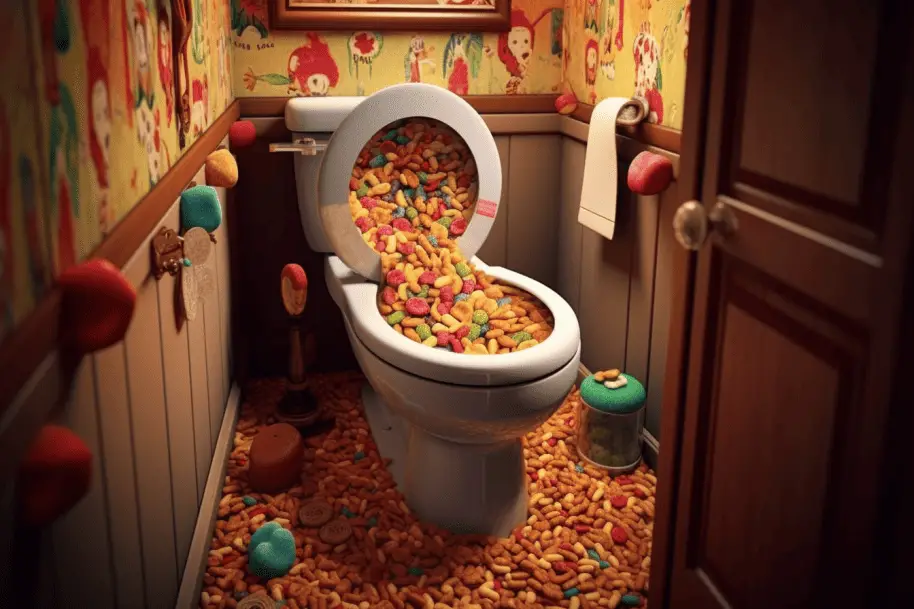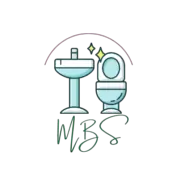In today’s modern world, we often find ourselves pondering questions we never thought to ask before.
such question is, “Can you flush cereal down the toilet?” The short answer is no, it is not advisable to flush cereal down the toilet as it can lead to potential plumbing problems. Although toilets are designed for human waste and toilet paper, disposing of other substances can cause severe issues, such as blockages.
In this blog, we will explore the ramifications of flushing cereal and similar items, along with discussing related questions like what happens when such items are flushed, how it can affect your plumbing system, and how to dispose of these materials more responsibly. So, let’s embark on this educational journey and uncover the mysteries surrounding the toilet and its limitations when it comes to disposing of cereal.

Is it Safe to Flush Cereal Down the Toilet?
When faced with the intriguing question, “Is it safe to flush cereal down the toilet?” you may be tempted to think, “Well, toilets are designed to handle waste, so what’s the harm?” The reality, however, is quite different. Despite the convenience factor, flushing cereal or any food waste down your toilet is not a safe practice.
First and foremost, toilets are engineered specifically to handle human waste and toilet paper. These items disintegrate and flow smoothly within your home’s plumbing system.
Cereal, even when soggy, tends to maintain its shape and consistency. As a result, it can easily cling to the inner walls of your pipes, posing a risk of creating blockages.
With time, those small obstructions can accumulate and develop into a challenge for your plumbing system and your wallet. We all know that calling a plumber to address a clogged pipe can be expensive, inconvenient, and downright frustrating. Also, consider the environmental impact. Aside from the water waste generated from a single flush, when food waste, especially items like cereal, accumulate in pipes and sewer systems, they can contribute to the growth of bacteria and foul odors.
What Happens When You Flush Cereal and Other Non-Toilet-Friendly Items?
Flushing cereal or other non-toilet-friendly items may seem harmless at first, but doing so can lead to several consequential problems for your plumbing system and the environment. Here’s what happens when you flush these items instead of disposing of them correctly:
- Obstructions in pipes: Cereal and other non-disintegrating substances can cling to the insides of pipes, creating obstructions. With time, these obstructions can accumulate and lead to blockages, eventually causing the pipes to back up.
- Plumbing issues: Blocked pipes can result in flooding and the need for costly repairs. This disruption could mean inconvenience for your family and added expenses, such as plumber fees and potential water damage restoration.
- Overburdened sewer systems: Flushing the wrong items can stress the local sewer systems and wastewater treatment plants. Along with cereal, other everyday culprits include cooking grease, wet wipes, and cotton balls, which can all lead to massive clumps that obstruct the flow of wastewater.
- Impact on the environment: Incorrectly disposing of food waste through flushing not only increases water consumption but also contributes to bacterial growth and unpleasant odors in pipes and sewer systems. Additionally, some types of cereal may contain microplastics, which can make their way into waterways and harm marine life.
- Damage to septic systems: If you have a septic system, flushing cereal and other non-toilet-friendly items can disrupt the balance of good and bad bacteria in the tank, leading to inefficient waste decomposition. You may end up facing costly repairs or even needing to replace your septic system.
To steer clear of these problems, it’s vital to remember that your toilet is designed exclusively for human waste and toilet paper. Instead of flushing cereal and comparable items, opt for alternative disposal methods. By doing so, you can avoid negatively impacting your plumbing system, local sewer systems, and the environment.
How Can Flushing Cereal Lead to Plumbing Problems?

The following are some of the plumbing problems that can arise when you flush cereal and the reasons behind them:
- Clogged pipes: Unlike human waste and toilet paper, which break down and disintegrate easily, cereal maintains its structural integrity even when soaked. Subsequently, cereal particles can accumulate and lead to pipe blockages, restricting the flow of water and waste.
- Impaired plumbing components: Flushing cereal can put a strain on your home’s plumbing components, such as the toilet and drain trap, as they’re not designed to handle solid food waste. Over time, these components may become less efficient or even require replacement due to the consistent stress.
- Accelerated pipe damage: Cereal that is not removed from pipes can create blockages that trap other waste and toiletries in the plumbing system, leading to increased pressure on the pipes. This added pressure can potentially accelerate the wear and tear on your pipes, making them more susceptible to leaks, cracks, and other forms of damage.
- Notorious “fatbergs”: When cereal (or any other solid food waste) binds with other household waste, such as grease and wipes, it can lead to the formation of large obstructions called fatbergs. These monstrous fatbergs can clog the wastewater system, requiring costly and time-consuming removal processes.
- Increased plumber visits: Frequent blockages and related plumbing problems resulting from flushing cereal often lead to increased visits from plumbers, which can be expensive and inconvenient.
Understanding the gravity of these potential issues, responsible homeowners should avoid flushing cereal or any non-toilet-friendly items down the toilet. Proper waste disposal methods, such as composting or simply using a trash can, are always a better option.
What Are the Alternatives to Disposing of Cereal in the Toilet?
Given that flushing cereal down the toilet is neither safe nor advisable, you might wonder what other options are available. Fortunately, there are several eco-friendly, responsible alternatives for disposing of cereal that won’t negatively impact your plumbing system or the environment.
- Composting: One of the best ways to dispose of cereal is by adding it to your compost heap or bin. Cereal is an organic waste that can help create nutrient-rich compost for your garden. By contributing to a healthy compost mix, you can promote a more sustainable future and reduce the volume of waste in landfills.
- Trash disposal: While it might seem like common sense, simply disposing of cereal in your regular trash is an easy and effective alternative. Double-check that the cereal is sealed in a plastic bag or container to avoid attracting insects or rodents.
- Animal feed: If the cereal is still in good condition but close to or just past its expiration date, consider sharing it with the local fauna. Birds, squirrels, and even chickens are known to appreciate cereal as a tasty snack. However, make sure to check your local regulations and guidelines for any restrictions on feeding wildlife.
- Reuse or donate: Unopened and non-expired cereal boxes can be donated to local food banks or shelters, ensuring that those in need can benefit from the food. Alternatively, get creative and upcycle cereal by using it in recipes, like homemade granola or granola bars, or incorporating it into tasty desserts.
- Food waste recycling: Some cities and municipalities offer food waste recycling programs. If available in your area, you can dispose of cereal and other food waste by placing it in a designated collection bin for collection and processing.
By utilizing these responsible and eco-friendly alternatives for disposing of cereal, you can help maintain a healthy plumbing system, contribute positively to the environment, and avoid unnecessary costs and issues.
What Should You Do If You’ve Accidentally Flushed Cereal and Created a Blockage?
Accidents can happen, and if you find yourself in a situation where you’ve inadvertently flushed cereal and caused a blockage in your plumbing, don’t panic. Here’s a step-by-step guide on how to address the issue:
Step 1: Turn off the water supply to the toilet
To prevent potential flooding, turn off the water supply to your toilet by locating the shut-off valve, usually found either on the wall or floor behind or beside the toilet, and turning it clockwise.
Step 2: Use a plunger
A plunger can help clear a blocked pipe by creating a vacuum and shifting the obstruction. Place the plunger over the drain hole, push down firmly, and then pull up quickly to create suction. Perform this action several times.
Step 3: Try a toilet auger or plumber’s snake
If the plunger doesn’t work, a toilet auger or plumber’s snake may help. Insert the auger into the drain hole and carefully maneuver it through the pipe to break up or retrieve the blockage.
Step 4: Inspect for ongoing issues
After successfully clearing the blockage, monitor the toilet for any additional issues, such as slow draining or recurring clogs.
Step 5: Call a professional plumber
If the blockage persists or you’re not comfortable using a plunger or auger, it’s best to consult a professional plumber. They have the expertise to diagnose and resolve the issue.
| Step | Action | Purpose |
|---|---|---|
| 1 | Turn off the water supply | Prevent flooding |
| 2 | Use a plunger | Attempt to clear the blockage with suction |
| 3 | Try a toilet auger or plumber’s snake | Break up or retrieve persistent blockages |
| 4 | Inspect for ongoing issues | Monitor the toilet for recurring problems |
| 5 | Call a professional plumber | Ensure proper resolution and prevent further damage |
Recognizing and promptly addressing a blockage caused by flushing cereal is crucial for maintaining a healthy plumbing system and avoiding additional costs or damage. Remember, prevention is key; always dispose of cereal and other non-toilet-friendly items responsibly.
Conclusion
In conclusion, the answer to the question “Can you flush cereal down the toilet?” is clear: No, you should not flush cereal down the toilet, as doing so can lead to a variety of plumbing problems, environmental concerns, and potential expenses.
By understanding the consequences of flushing cereal and other non-toilet-friendly items, you can take the necessary precautions to maintain a functional and eco-friendly household.
Always consider responsible alternatives to dispose of cereal, such as composting, trash disposal, or feeding animals, and avoid flushing anything other than human waste and toilet paper down your toilet. If an accident occurs and a blockage arises, it’s essential to remain calm and follow the appropriate steps to resolve the situation and keep your plumbing system intact.
Be mindful of your actions and remember that a little knowledge and awareness can go a long way in protecting your home, your wallet, and the environment.
